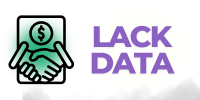Timing is everything when it comes to SMS marketing. Even the most compelling message can fall flat if it reaches your audience at the wrong time. Understanding the best times to send SMS messages is essential for marketers who want to maximize customer engagement and response rates. By strategically scheduling SMS campaigns, businesses can ensure their messages are read promptly and acted upon, resulting in higher conversion rates and better return on investment.
Understanding Audience Behavior and Daily Patterns
When Are Customers Most Receptive?
To find the best times for sending SMS, marketers first need to understand their audience’s daily routines and habits. Generally, SMS messages sent during business hours—from around 9 AM to 6 PM—tend to have higher open and response rates. People belize phone number list are more likely to check their phones during breaks, commutes, or lunchtime, making mid-morning and early afternoon prime windows for engagement.
However, it’s important to consider your specific target audience. For example, younger demographics or night-shift workers might respond better to messages sent in the evening or late at night. Segmenting your mobile list by customer profiles and analyzing past campaign data can help identify these unique patterns, ensuring your messages hit the inbox at the right moment.
Avoiding Common Pitfalls: Timing Mistakes to Skip
Why Sending SMS Too Early or Too Late Hurts Campaigns
Sending SMS messages too early in the morning or late at night can annoy recipients and lead to opt-outs or negative brand perception. For instance, messages delivered before 8 AM or after 9 PM are often seen as intrusive, disrupting customers’ personal time or sleep. Respecting these “quiet hours” not only shows professionalism but also builds trust with your audience.
Another common mistake is sending messages during weekends website creation for dealerships in rj – digital impact solutions or holidays without a clear reason. While weekends can sometimes work for retail promotions, many consumers prefer not to receive marketing texts during their downtime. Testing and segmenting based on response data can help marketers decide whether weekend campaigns make sense for their specific niche.
Leveraging Analytics for Optimal SMS Scheduling
Using Data to Fine-Tune Your Timing
is through continuous tracking and analysis. Most SMS marketing platforms offer detailed insights on delivery times, open rates, and responses. By reviewing this data, marketers whatsapp database brazil can identify which hours and days generate the most engagement and adjust their scheduling accordingly.
Experimenting with A/B testing can also help optimize SMS refine timing strategies. For example, sending the same message at different times to two separate audience groups can reveal which timing yields better results. Over time, these insights enable marketers to build a tailored SMS schedule that maximizes customer response and campaign effectiveness.
Conclusion
Choosing the best times to send SMS messages is crucial for successful marketing campaigns. By understanding audience behavior, avoiding poorly timed messages, and leveraging data analytics, businesses can increase engagement and achieve higher response rates. Smart timing combined with compelling content ensures your SMS campaigns deliver maximum impact and drive meaningful results.
